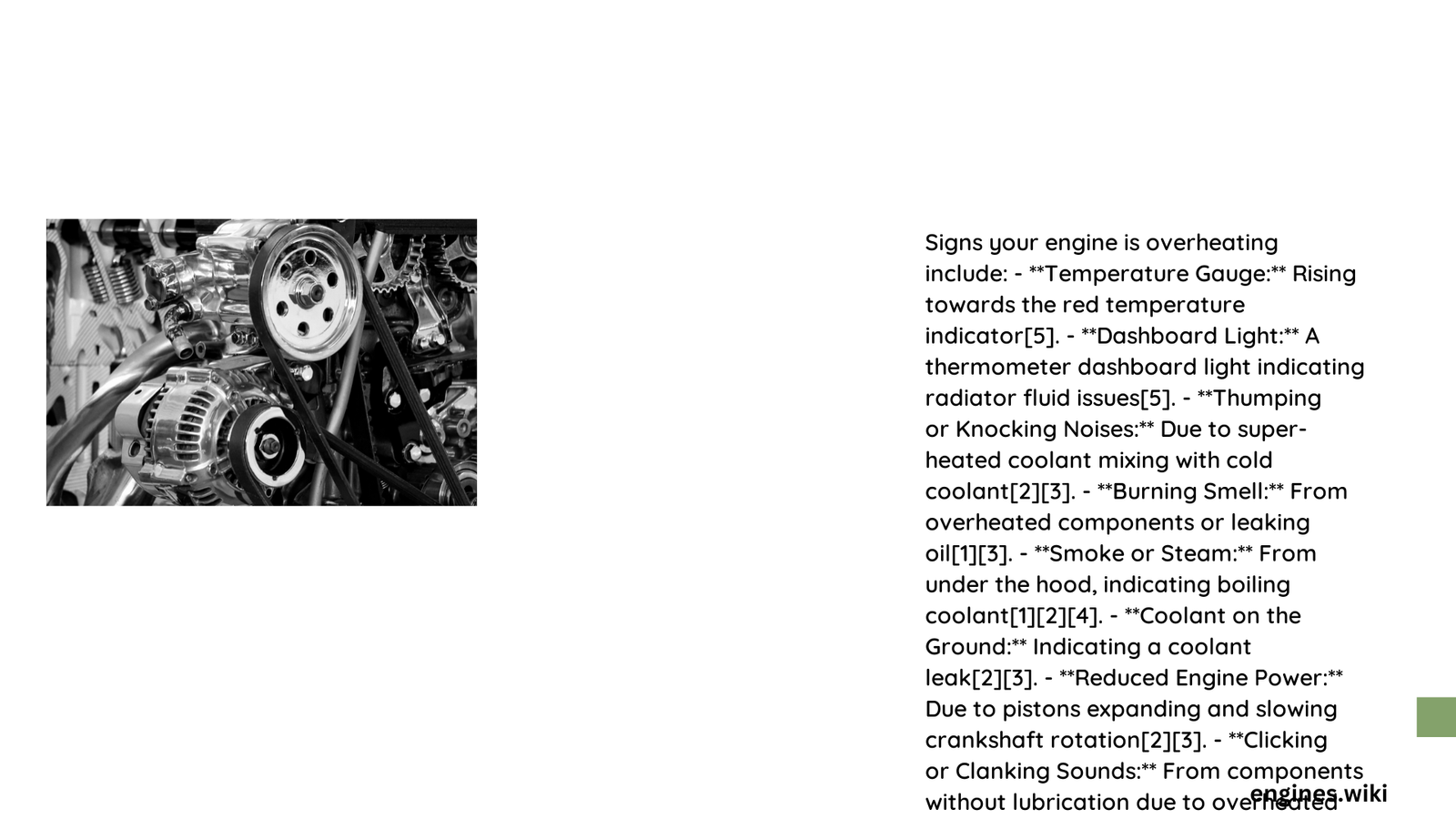An overheating engine can transform a smooth drive into a potential mechanical disaster within minutes. Recognizing early warning signs is crucial for preventing expensive repairs and complete engine failure. From temperature gauge warnings to unusual steam and sounds, understanding these critical indicators can save your vehicle’s heart and your wallet from catastrophic damage.
What Are the First Warning Signs of Engine Overheating?
How Can Temperature Gauge Reveal Engine Problems?
The temperature gauge is your first line of defense against engine overheating. Here’s what to watch:
| Temperature Range | Status | Action Required |
|---|---|---|
| 195°F – 220°F | Normal | No Immediate Action |
| 220°F – 240°F | Caution | Check Cooling System |
| 240°F+ | Critical | Stop Driving Immediately |
Key Indicators:
– Red warning light illumination
– Needle moving towards “H” or red zone
– Sudden temperature spike
What Happens When Coolant Leaks?
Coolant leakage represents a critical threat to engine temperature regulation. Potential leak locations include:
- Radiator connections
- Hose junctions
- Water pump seal
- Radiator cap
- Engine block
Diagnostic Checklist:
– Check coolant reservoir levels
– Inspect ground for liquid puddles
– Look for white/green fluid residue
– Monitor coolant consumption rate
Can Steam Indicate Serious Engine Problems?
Steam emerging from your engine bay is never a good sign. When coolant reaches boiling point (typically above 220°F), it transforms into vapor, creating visible steam.
Steam Characteristics:
– White or grayish color
– Emerging from hood area
– Accompanied by burning smell
– Indicates immediate cooling system failure
What Unusual Sounds Suggest Engine Overheating?
Engines communicate distress through unique sounds:
- Thumping Noises: Indicate air pockets in cooling system
- Gurgling Sounds: Suggest boiling coolant
- Hissing: Potential pressure buildup
- Knocking: Potential metal component damage
How Do Mechanical Failures Contribute to Overheating?
Several mechanical components can trigger overheating:
- Faulty thermostat
- Broken water pump
- Clogged radiator
- Damaged fan belt
- Insufficient coolant
What Immediate Steps Should You Take?
Emergency Protocol:
1. Safely pull over
2. Turn off engine
3. Do NOT open hood immediately
4. Wait 15-20 minutes for cooling
5. Check coolant levels
6. Call professional mechanic
Can Regular Maintenance Prevent Overheating?
Preventive Maintenance Checklist:
– Quarterly coolant level inspection
– Annual cooling system flush
– Replace coolant every 30,000 miles
– Check hoses for wear
– Maintain proper coolant mixture
What Are Long-Term Consequences of Ignored Overheating?
Neglecting early warning signs can lead to:
– Blown head gasket
– Warped cylinder heads
– Complete engine replacement
– Thousands of dollars in repairs
How Often Should Cooling System Be Professionally Checked?
Recommended Inspection Frequency:
– Every 12 months
– Before long trips
– After experiencing any overheating symptoms
– During regular vehicle service
What Tools Can Help Monitor Engine Temperature?
Modern diagnostic tools offer real-time monitoring:
– OBD-II scanners
– Infrared thermometers
– Digital temperature gauges
– Smartphone diagnostic apps
When Should You Seek Professional Help?
Immediate Professional Consultation Required If:
– Persistent warning lights
– Continuous steam
– Recurring overheating
– Visible coolant leaks
– Unusual engine sounds
Conclusion

Understanding and responding to signs your engine is overheating can prevent catastrophic damage. Regular maintenance, keen observation, and prompt action are your best strategies for preserving your vehicle’s engine health.
